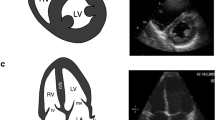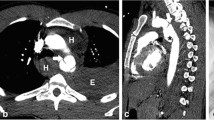Abstract
Introduction
Accurate physical examination (PE) remains a key component in the assessment of penetrating thoracic trauma (PTT), despite the increasing availability of advanced radiological imaging. Evidence regarding the accuracy of PE in identifying significant pathology following PTT is limited.
Materials and methods
A retrospective review of 405 patients was undertaken over a twelve-month period to determine the accuracy of PE in identifying significant pathology (SP) subsequently confirmed on chest radiographs (CXRs) in patients who sustained stab injuries to the thorax.
Results
Ninety-seven per cent (372/405) of patients were males, and the mean age was 24 years. The weapons involved were knives in 98 % (398/405), screwdrivers in 1 % (3/405) and unknown in the remaining 1 %. Fifty-nine per cent (238/405) of all injuries were on the left side. There were 306 (76 %) SPs identified on CXR. Ninety-nine (24 %) CXRs were entirely normal. Based on PE alone, 223 (55 %) patients were thought to have SPs present, 182 (45 %) patients were thought to have no SPs. The overall sensitivity of PE in identifying SPs was 68 % (63–73, 95 % CI), with a specificity of 86 % (77–92, 95 % CI). The PPV of PE was 94 % (90–97, 95 % CI) and the NPV was 47 % (39–54, 95 % CI). The sensitivity of PE for identifying a pneumothorax was 59 % (51–66, 95 % CI), with a specificity of 96 % (89–99, 95 % CI) and the sensitivity of PE for identifying a haemothorax was 79 % (72–86, 95 % CI), with a specificity of 96 % (89–99, 95 % CI).
Conclusions
PE is inaccurate in identifying SPs in PTT. The increased reliance on advanced radiological imaging and the subsequent reduced emphasis on PE may have contributed to rapid deskilling amongst surgical residents. The importance of PE must be repeatedly re-emphasised.
Similar content being viewed by others
References
Hirshberg A, Thomson SR, Huizinga WK. Reliability of physical examination in penetrating chest injuries. Injury. 1988;19(6):407–9.
Advanced trauma life support for doctors. Student manual. 9th ed. Chicago: American College of Surgeons Committee on Trauma; 2012.
Lewis FR. Thoracic trauma. Surg Clin North Am. 1982;62:97–104.
Ho ML, Gutierrez FR. Chest radiography in thoracic polytrauma. AJR Am J Roentgenol. 2009;192(3):599–612. doi:10.2214/AJR.07.3324.
Sibbald M, Cavalcanti RB. The biasing effect of clinical history on physical examination diagnostic accuracy. Med Educ. 2011;45(8):827–34. doi:10.1111/j.1365-2923.2011.03997.x.
Kirkpatrick AW, Simons RK, Brown R, et al. The hand-held FAST: experience with hand-held trauma sonography in a level-I urban trauma center. Injury. 2002;33(4):303–8.
Thomson SR, Huizinga WK, Hirshberg A. Prospective study of the yield of physical examination compared with chest radiography in penetrating thoracic trauma. Thorax. 1990;45(8):616–9.
Bhagwanjee S, Muckart DJ. Routine daily chest radiography is not indicated for ventilated patients in a surgical ICU. Intensive Care Med. 1996;22(12):1335–8.
Demetriades D, Rabinowitz B, Markides N. Indications for thoracotomy in stab injuries of the chest: a prospective study of 543 patients. Br J Surg. 1986;73:880–90.
Muckart DJ, Meumann C, Botha JB. The changing pattern of penetrating torso trauma in KwaZulu/Natal—a clinical and pathological review. S Afr Med J. 1995;85(11):1172–4.
Leigh-Smith S, Harris T. Tension pneumothorax—time for a re-think? Emerg Med J. 2005;22(1):8–16. doi:10.1136/emj.2003.010421.
Diaz-Guzman E, Budev MM. Accuracy of the physical examination in evaluating pleural effusion. Cleve Clin J Med. 2008;75(4):297–303.
Bokhari F, Brakenridge S, Nagy K, et al. Prospective evaluation of the sensitivity of physical examination in chest trauma. J Trauma. 2002;53(6):1135–8.
Jauhar S. The demise of the physical exam. N Engl J Med. 2006;354(6):548–51.
Oliver CM, Hunter SA, Ikeda T, et al. Junior doctor skill in the art of physical examination: a retrospective study of the medical admission note over four decades. BMJ Open. 2013;3(4):e002257. doi:10.1136/bmjopen-2012-002257.
Kong VY, Oosthuizen GV, Sartorius B, Bruce JL, Clarke DL. Penetrating cardiac injuries and the evolving management algorithm in the current era. J Surg Res. 2014. doi:10.1016/j.jss.2014.09.027.
Conflict of interest
Victor Kong, Benn Sartorius and Damian Clarke declare that they have no conflict of interest.
Compliance with ethics guidelines
Victor Kong, Benn Sartorius and Damian Clarke declare that all procedures followed were in accordance with the ethical standards of the responsible committee on human experimentation (institutional and national) and with the Helsinki Declaration of 1975, as revised in 2008 (5). Informed consent was obtained from all patients for being included in the study.
Author information
Authors and Affiliations
Corresponding author
Rights and permissions
About this article
Cite this article
Kong, V.Y., Sartorius, B. & Clarke, D.L. The accuracy of physical examination in identifying significant pathologies in penetrating thoracic trauma. Eur J Trauma Emerg Surg 41, 647–650 (2015). https://doi.org/10.1007/s00068-014-0484-6
Received:
Accepted:
Published:
Issue Date:
DOI: https://doi.org/10.1007/s00068-014-0484-6




